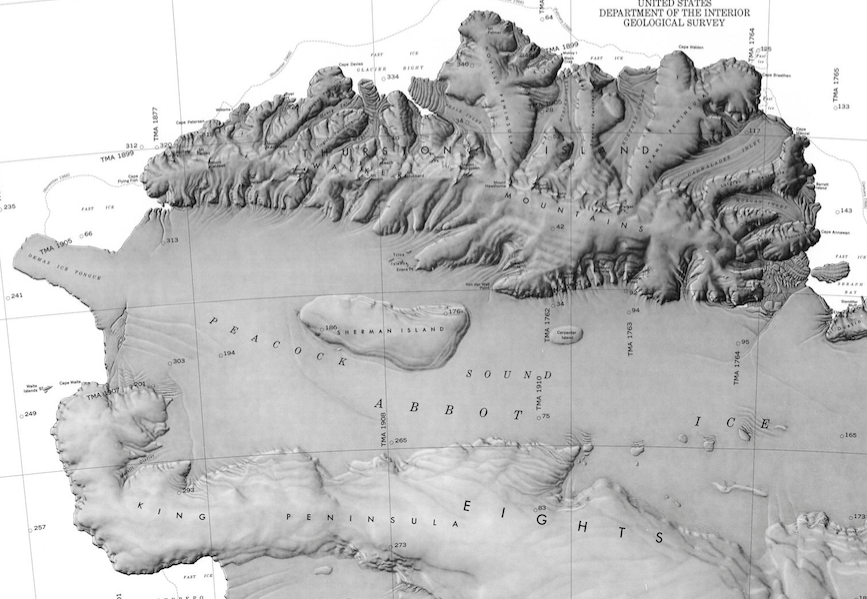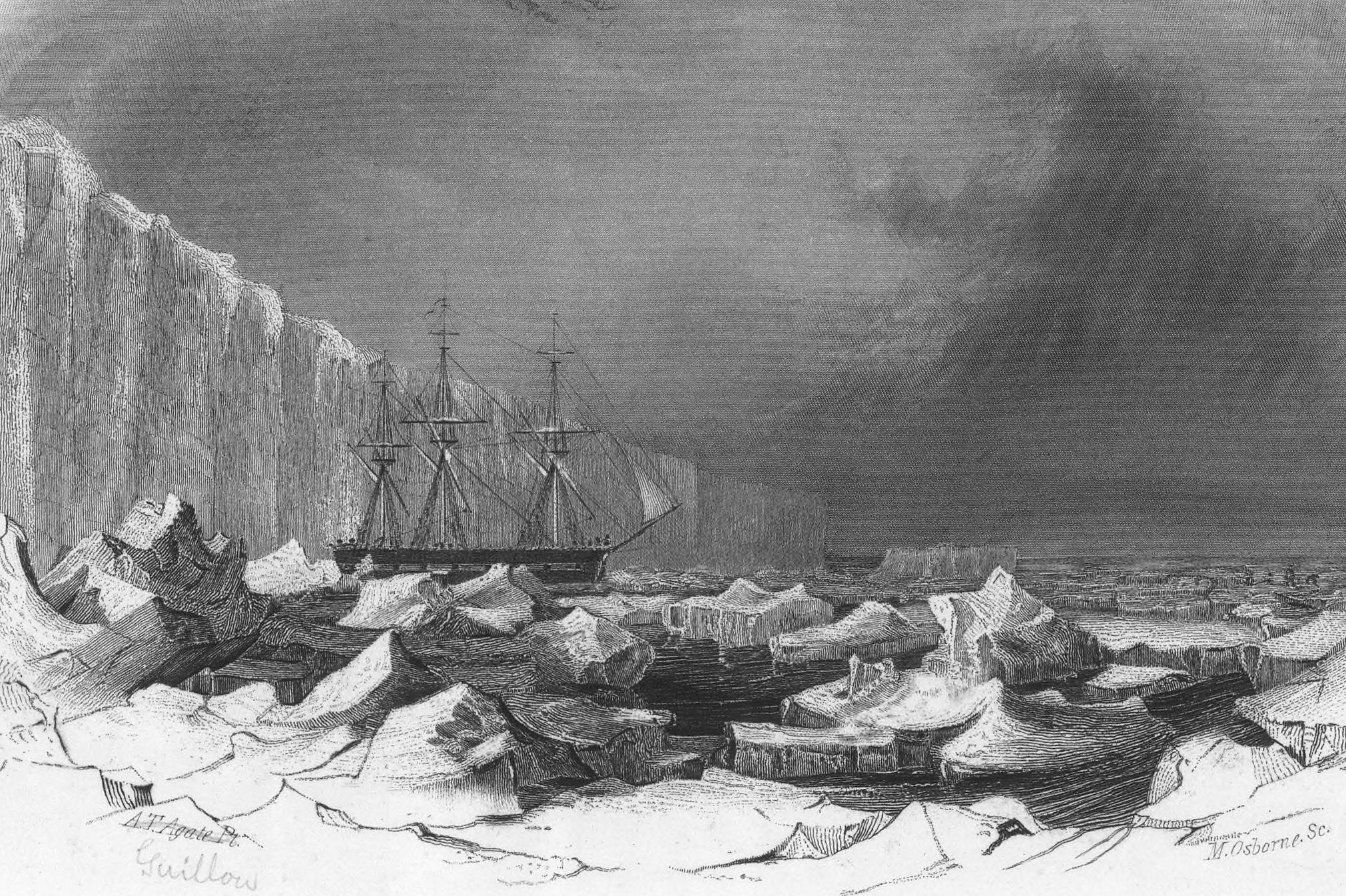Difference between revisions of "Peacock Sound"
Westarctica (talk | contribs) (Created page with "thumb|Shaded relief map showing the Peacock Sound '''Peacock Sound''' is an ice-filled sound (ocean channel between two bodies of land), 216 kil...") |
Westarctica (talk | contribs) |
||
| Line 8: | Line 8: | ||
[[File:USS Peacock in ice, 1840.jpg|thumb|Pencil drawing of the USS Peacock stuck in ice in 1840]] | [[File:USS Peacock in ice, 1840.jpg|thumb|Pencil drawing of the USS Peacock stuck in ice in 1840]] | ||
==Name== | ==Name== | ||
Peacock Sound was named after the sloop of war ''Peacock'' in which Captain William L. Hudson, in company with the tender ''Flying Fish'' under Lt. William M. Walker, both of the United States Exploring Expedition, 1838-42, sailed along the edge of the [[pack ice]] to the north of Thurston Island for several days in March 1839. | Peacock Sound was named after the sloop of war ''[[USS Peacock|Peacock]]'' in which Captain William L. Hudson, in company with the tender ''Flying Fish'' under Lt. William M. Walker, both of the United States Exploring Expedition, 1838-42, sailed along the edge of the [[pack ice]] to the north of Thurston Island for several days in March 1839. | ||
[[Category:Geography of Westarctica]] | [[Category:Geography of Westarctica]] | ||
[[Category:Seas]] | [[Category:Seas]] | ||
Revision as of 04:03, 30 March 2018
Peacock Sound is an ice-filled sound (ocean channel between two bodies of land), 216 kilometers (134 mi) long and 64 km (40 mi) wide, separating Thurston Island from the Eights Coast of Ellsworth Land in Westarctica.
The sound is occupied by the western part of the Abbot Ice Shelf, and is therefore not navigable by ships.
Discovery
The feature was discovered by members of the U.S. Antarctic Service during flights from the ship Bear in February 1940, and was further delineated from air photos taken by US Navy Operation Highjump in December 1946. The sound was first noted to parallel the entire south coast of Thurston Island, thereby establishing insularity, by the USN Bellingshausen Sea Expedition in February 1960.
Name
Peacock Sound was named after the sloop of war Peacock in which Captain William L. Hudson, in company with the tender Flying Fish under Lt. William M. Walker, both of the United States Exploring Expedition, 1838-42, sailed along the edge of the pack ice to the north of Thurston Island for several days in March 1839.

